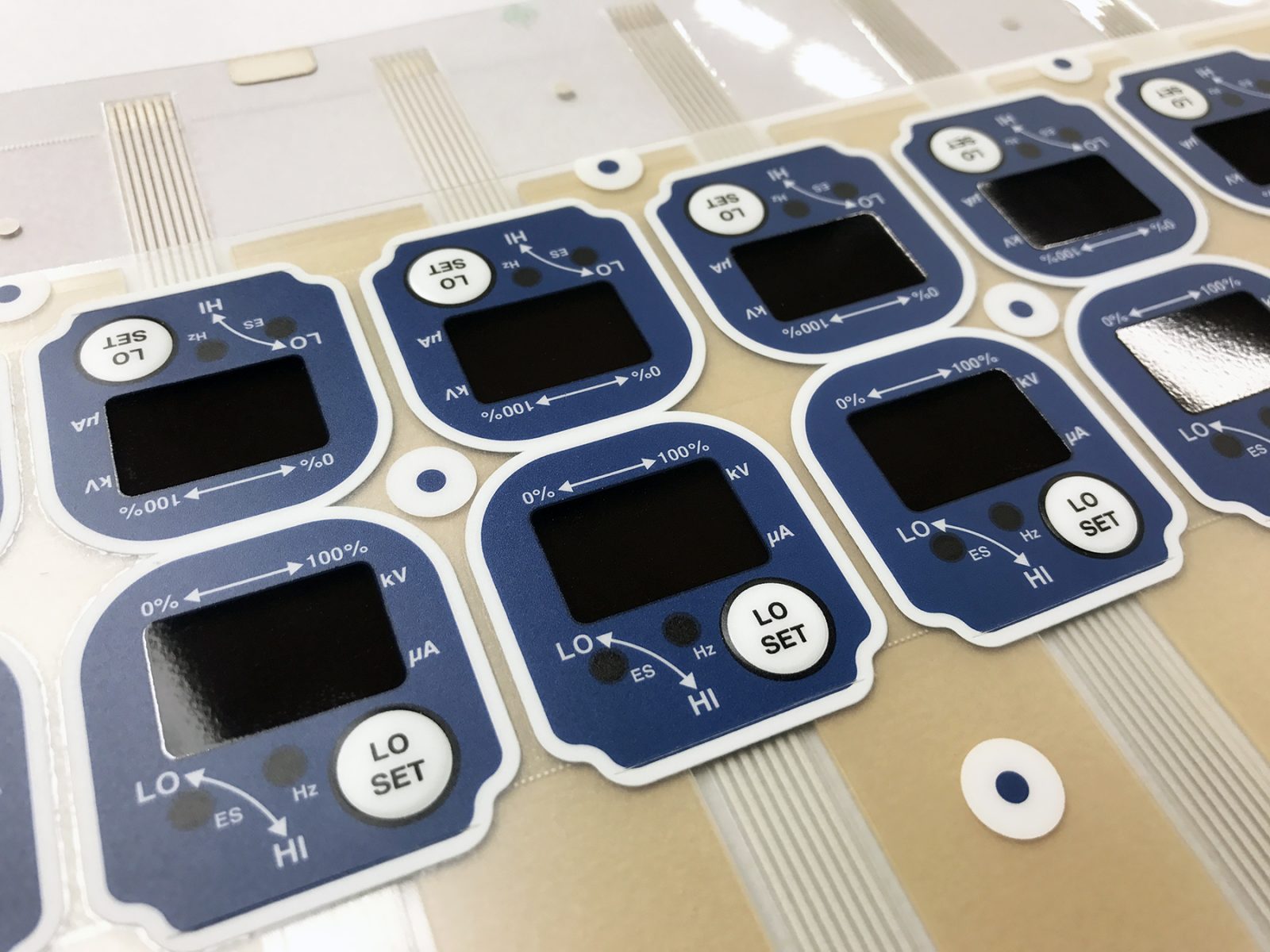Understanding Membrane Layer Switches: The Secret to Trustworthy and resilient Controls

What Are Membrane Switches?
Membrane buttons are an innovative solution in the realm of interface innovation, incorporating functionality and design perfectly. These gadgets work as a user interface between users and electronic systems, integrating a number of elements right into a portable layout. Typically constructed from flexible, thin layers of materials, membrane switches are created to reply to touch, making it possible for users to engage with equipment and electronic gadgets efficiently.
The key components of a membrane button consist of a published circuit layer, visuals overlay, and a spacer layer that protects against unplanned activation. The visuals overlay can be tailored to mirror brand name identification or individual preferences, enhancing looks while making certain use. Membrane layer switches are typically utilized in various applications, including medical tools, customer electronic devices, and industrial equipment, owing to their resilience and resistance to environmental variables such as dampness and dirt.
One of the key benefits of membrane layer switches is their capacity to hold up against deterioration, making them optimal for high-traffic environments. Additionally, they are light-weight and need marginal space, allowing for cutting-edge styles in product growth. In general, membrane layer changes represent a sensible and effective option for modern-day electronic interfaces, weding technology with user-centric layout principles.
Just How Membrane Switches Over Work
The procedure of membrane switches over hinges on a straightforward yet efficient device that equates customer input into digital signals. These switches are composed of multiple layers, commonly including a visuals overlay, a spacer layer, and a circuit layer. When a user presses the switch, the leading layer deforms, enabling a conductive component in the circuit layer to make contact with an equivalent conductive pad on the underside of the visuals overlay. This call closes the circuit and sends out a digital signal to the gadget, showing that the button has been triggered.
The layout of membrane switches can vary, however they often incorporate domes or tactile aspects to give feedback to the user, improving the general experience - membrane switch. The products made use of in membrane layer switches, such as polyester or polycarbonate, contribute to their sturdiness and resistance to ecological variables, consisting of dampness and dirt. The published circuits are typically visit the site encapsulated, which protects them from wear and tear over time.
Benefits of Membrane Switches

In addition, membrane layer buttons are known for their resilience. Built from durable products, they are immune to dirt, dampness, and physical wear, which significantly extends their life expectancy compared to standard mechanical buttons. This toughness makes them specifically ideal for high-traffic environments and applications requiring longevity.
Another significant benefit is the ease of cleaning and upkeep. The smooth surface area of membrane switches reduces dust accumulation and is usually unsusceptible spills, making them ideal for settings that need frequent sanitization.
Moreover, membrane buttons provide a streamlined profile, causing a thinner style that can be integrated into various tools without including bulk. This feature not only boosts the visual appeal but additionally adds to a much more ergonomic product layout.
Applications of Membrane Layer Switches
Versatile and user-friendly, membrane buttons discover applications across a wide variety of markets, including clinical gadgets, customer electronic devices, and industrial tools. In the medical field, these buttons are essential to tools such as analysis equipment, person tracking systems, and infusion pumps, where integrity and ease visit of cleansing are important. Their capability to withstand extreme environments and keep capability makes them optimal for such applications.

In customer electronic devices, membrane buttons are utilized in items like microwaves, washing makers, and remote controls - membrane switch. Their smooth layout allows for instinctive interface, boosting the general individual experience while providing toughness and resistance to deterioration
Commercial equipment likewise profits from membrane layer switches, especially in control panels for equipment and automation systems. These buttons offer protection against dirt and dampness, guaranteeing regular performance in tough environments. Additionally, their personalized attributes allow producers to tailor them to particular operational demands, improving efficiency and performance.
Selecting the Right Membrane Switch
When choosing a membrane switch, it is vital to take into consideration different aspects that affect performance and suitability for particular applications. The primary considerations include ecological problems, responsive comments, sturdiness, and style specifications.
First, evaluate the operating environment; buttons revealed to wetness, chemicals, or extreme temperatures call for details products to make certain durability and performance. Next, review the demand for tactile feedback. Relying on individual interaction, some applications may take advantage of a tactile reaction to validate activation, while others might choose a non-tactile design for visual reasons.
Durability is an additional important element; membrane layer buttons should be made to stand up to frequent usage, impacts, and abrasion. Make certain the chosen switch can sustain the expected lifecycle, specifically in high-usage situations.

Final Thought
In final thought, membrane layer switches over serve as necessary components in the style of dependable and long lasting control systems throughout various markets. The convenience of membrane read this article changes permits for customized solutions that satisfy details operational requirements, strengthening their value in modern technology.
Membrane layer switches over stand for a crucial element of modern-day user interface design, blending functionality with durability in different applications.Membrane layer buttons are an innovative solution in the realm of user interface innovation, integrating performance and layout flawlessly. Generally built from versatile, thin layers of products, membrane layer switches are created to react to touch, making it possible for customers to connect with equipment and electronic devices effectively.
The design of membrane switches can differ, yet they often incorporate domes or tactile elements to provide responses to the customer, boosting the total experience.In verdict, membrane layer changes serve as important components in the layout of durable and reliable control systems throughout different markets.